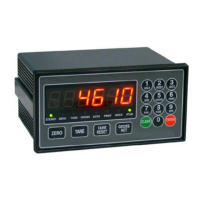What to do if dacell Measuring Instruments display shows 'OVER' or 'UNDER'?
- SSophia HutchinsonAug 3, 2025
If the dacell Measuring Instruments display indicates 'OVER' or 'UNDER', it could be due to a defective sensor, an open or short in the sensor's input/output line, or another issue. First, check the sensor wiring. If that doesn't resolve the problem, check the connection to the sensor. If the issue persists, consider exchanging the sensor for a new one.

